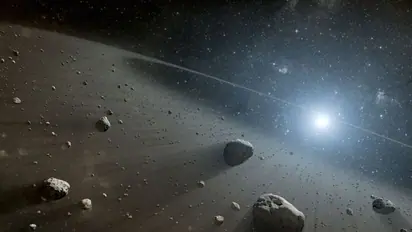Rare celestial conjunction with Moon, Saturn, Jupiter to occur on September 17, 18

Synopsis
The first conjunction will occur when the Moon and the ringed planet Saturn align in the night sky on September 17. The Moon-Saturn junction will begin today at 02.33 GMT, when the natural satellite crosses three degrees 45 inches south of Saturn, putting both celestial objects in the constellation Capricornus.
The largest planet in the Solar System is ready for another cosmic event months after the Great Conjunction, when Saturn and Jupiter joined in their orbits, producing a rare astronomical spectacle visible from Earth in spots even with the naked eye. The Moon will be in conjunction with Saturn and Jupiter on September 17 and 18, respectively. The first conjunction will occur when the Moon and the ringed planet Saturn align in the night sky on September 17. The Moon-Saturn junction will begin today at 02.33 GMT, when the natural satellite crosses three degrees 45 inches south of Saturn, putting both celestial objects in the constellation Capricornus.
According to astronomers, the ringed planet will look dim in the night sky with a brightness of just 0.2, but it may be seen as a speck near to the Moon and will provide a better view of the system if you have a telescope. On September 18, the largest planet in the solar system will pass close to the Moon, marking the start of the next celestial event. After midnight, Jupiter will be visible in the east-northeast sky near the Moon. Throughout the night, the Moon and Jupiter will be near to each other. Jupiter was recently in the news due to a large impact event, so search for impact scars on the gas giant if you have a strong telescope pointed at it. Aside from Jupiter, skywatchers will see the Jovian system, which includes four moons around the giant planet.
Also Read | It's official: NASA confirms Perseverance Mars Rover gets 'one-of-a-kind' Martian rock
Stargazers will be able to see not just the planet but also Ganymede, the solar system's largest Moon. The three other moons, Io, Europa, and Callisto, will seem to form an isosceles triangle in the meanwhile.